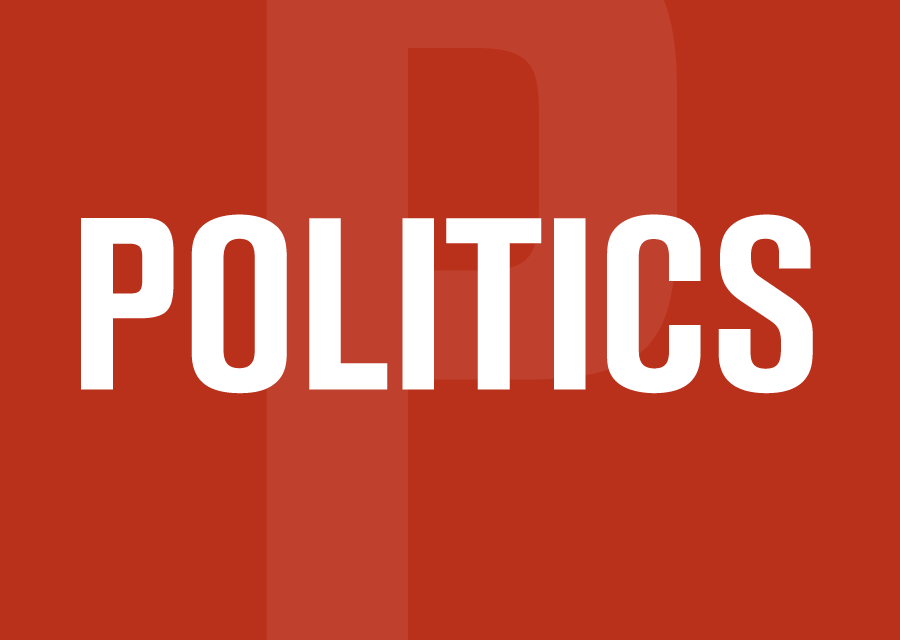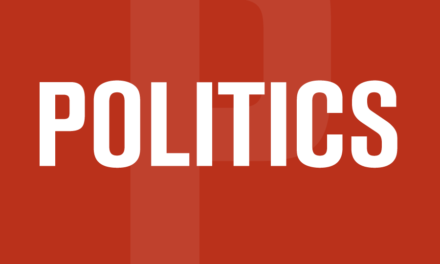As our country moves closer to the crucial federal election, media and the people who work in the industry are in the political fray in ways that we are not accustomed to seeing. The main opposition party routinely accuses reporters of being tools of government propaganda, and attacks journalists for asking questions.
Meanwhile, the companies that employ journalists have been cutting jobs as they continue to lose readers and viewers, while the debate about how or whether government should respond to the loss of information sources has become polarized.
There is nothing unusual about political parties or their partisans complaining about biased news coverage (in another life, I may have been guilty of doing it myself). Nor is it unusual to see policy debates about the shape of the industry, usually focused on concentration of ownership or the state of the CBC.
But what makes the current situation different is that the Poilievre-led Conservatives have broadened the attack beyond their oft-repeated promise to “defund” the CBC. Criticism of the “liberal-media” – a familiar target for right-wing politicians – is being applied to the entire “legacy media” and the Trudeau government’s various efforts to bail out those entities and support the journalists who work for them.
In Poilievre’s world, the mainstream media – which despite the rise of social media and digital news sites reman the dominant sources of news – have become “the bought-and-paid-for Liberal media.” In fund-raising messages supporters are urged to shell out so the party can “broadcast Pierre’s common sense message over and around the Liberal-funded biased media.”
Conservatives claimed in one message that by “bankrolling” the industry, Trudeau is trying to control the media. In another, they imply the Liberals have succeeded, leaving Conservatives to face “an unprecedented amount of attacks by mainstream media…the legacy media is strategically landing attacks on Pierre and the common sense Canadians who support our movement.” Supporters are urged to hit the donate button because “we cannot afford to let their partisan propaganda influence the upcoming election.”
To spice up the appeal the Conservatives like to add video – the prime example being Poilievre’s apple-munching take-down of an over-worked Okanagan Valley journalist. Poilievre’s display of supercilious browbeating supposedly “went viral.” And lately he has been confronting reporters directly on government assistance to their employers, telling a Canadian Press reporter that his party opposes the practice because “we end up with biased media like you who come here and articulate the PMO’s talking points.”
By taking on reporters the way he does, Poilievre invites comparisons with Trump, a linkage the Liberals are only too happy to make. As Susan Delacourt of the Toronto Star maintains:
Poilievre and his team resent this comparison, which Liberals have increasingly been talking up. But sorry, when it comes to using social media and news conferences to delegitimize the press, Poilievre is clearly a student of the Trump school of media management.
It’s tempting to go with the Trump comparison and see the Poilievre attacks as simply part of a campaign to delegitimize the news media, making it even easier for the Conservatives to sell their version of reality to the public. However, unlike many half-truths he spouts, his critique of the media bailout has some validity. As we will see, criticism of the Trudeau government’s efforts to support the news media have come from across the political spectrum.
The News Blues
The 21st century has not been kind to the news business. It’s something of an oversimplification, but migration of advertising dollars to the Internet, combined with the economic fallout from the Great Recession of 2008, sent newspapers into a tailspin and jeopardized local news coverage.
Nationally, the most notable flameout occurred in 2009 with the collapse of the Asper family’s Canwest Global newspaper and TV conglomerate. In Nova Scotia, it took the pandemic, poor management and a strike to complete the reduction of the Chronicle-Herald to a shadow of its former self. But at least the Herald is still publishing, which is more than can be said for the more than 40 dailies that have closed since 2013.
In 2013, there were 112 daily newspapers in Canada, with average weekly circulation of 34 million copies. In 2022, there were just 71 dailies remaining, with circulation of just over 16 million. There are no reliable current estimates of how many journalism jobs have been lost, but a Statistics Canada tabulation a few years ago found a drop from 11,600 in 2015 to 9,100 in 2019. You can blame advertisers’ fatal internet attraction for much of the carnage.
As the table shows, the rise of the internet advertising has affected all conventional media, but data published by Thinktv indicates that newspapers have been by far the hardest hit.
Change in advertising expenditure ($000,000) and share(%) by medium
| 2014 | 2018 | 2022 | |
| Ad Spending total media | $12,156 | $14,111 | $19,575 |
| TV | $3,793 (28.9%) | $3,138 (22.2%) | $3,347 (17.1%) |
| Dailies | $1,678 (13.8%) | $897 (6.4%) | $565 (2.9%) |
| Community papers | $968 (8.0%) | $688 (4.9%) | $385 (2.0%) |
| Radio | $1,613 (13.3%) | $1,517 (10.8%) | $1,104 (5.6%) |
| Internet | $3,793 (31.2%) | $7,592 (53.8%) | $14,172 (72.4%) |
Source: Thinktv
According to the federal government, some 80 percent of the internet advertising revenue has been scooped up by Meta and Google. As the table shows, newspapers were the major victims of the tech giants. Combined, daily and community papers saw their ad revenue drop by 64 percent between 2014 and 2022, their share of ad revenue shrinking from nearly 22 per cent in 2014 to under five percent in 2022 – 2.9 percent for dailies and 2.0 percent for community newspapers.
The Trudeau government at first resisted bailout pleas from News Media Canada, the newspaper industry lobbyist. But in 2019, with a federal election on the horizon, the Liberals introduced two measures designed to preserve local journalism.
The Local Journalism Initiative offered $50 million over five years to enable news organizations to hire reporters for under-serviced communities. The larger bailout, estimated to cost $595 million over five years, was in the form of a refundable labour tax credit, ostensibly to subsidize reporter salaries. Both programs were recently extended, with the journalism tax credit enhanced to a maximum of $29,750 per eligible employee.
The critics gather
Based on his recent attacks, Poilievre’s reaction at the time to the Liberal initiatives was predictable. When the labour tax credit was announced in 2018 he called it a slush fund aimed at buying favourable campaign coverage for the Liberals. But criticism also came from some who normally would have little in common with Poilievre.
In The Postmedia Effect, author (and Canadian Dimension magazine media critic) Marc Edge reports the reaction from Star columnist Thomas Walkom who wrote that the Liberals were “tiptoeing into a minefield” with a subsidy program that would not necessarily encourage newspapers to spend more on news. John G. Miller, former head of journalism at Ryerson, expressed doubt that the bailout would achieve any of its goals. And columnist and pundit Andrew Coyne was prescient. “The effect will be to inevitably and irrevocably politicize the press.”
There is much irony to the fact that Poilievre finds himself on the same page as the media critic for the left-wing Canadian Dimension or a leading columnist at the Liberal-leaning Toronto Star. A reason why many are critical of the bailout can be found in the title of Edge’s book – it’s the Postmedia effect. The conservative Postmedia, with its stable of strident anti-Liberal columnists (Rex Murphy, Lorne Gunter, Tasha Kheiriddin, Lorrie Goldstein, Brian Lilley etc.) was one of the key lobbyists for the bailout. And with its ownership of 35 of this country’s 71 daily newspapers, it would be one of its main beneficiaries. Maybe the next time a reporter dares to ask Poilievre about government support for news, they could work Postmedia into the question?
Taking on the Giants
As the numbers in the table have shown, despite the initial bailout measures, newspaper ad revenues have continued to decline, and in recent months, job cuts have spread to television newsrooms. Quebec’s TVA, the CTV network and the CBC all are laying off workers or threatening to do so. It is apparent that something more is needed, but what the Liberals have come up with – Bill C-18 the Online News Act – has not solved the problem. Worse, more than a year of political controversy over the legislation has added to the notion that the media have become beholden to government.
When the Liberals introduced the legislation in May 2022 they presented it as a market-driven plan to secure “long-term, reliable, structural support” for “a free and independent press” by requiring “the tech giants to fairly compensate Canadian journalists when they use their content.” Instead of relying only on government handouts to stay afloat, news rooms would be able to tap into the coffers of Google and Meta.
Sadly, over the course of many months of debate and wrangling with the tech giants, we learned that one of them, Meta, decided it didn’t need to link with news content on Facebook or Instagram. The other, Google, didn’t covet the content badly enough to pay the circa-$170 million the government was after. So far all that’s been gained is an agreement from Google to negotiate – with oversight from the CRTC – compensation to Canadian media of up to $100 million a year. It is to be split between broadcasters (37 per cent) and print and digital undertakings, payouts to be based on the number of full-time journalists employed producing original news content. Meantime, the Liberals have shown their lack of confidence in the tech giants as a reliable source of revenue by extending both the Local Journalism Initiative and the journalism tax credit, significantly enriching the latter.
Conservatives pounce
When Erin O’Toole led them into the 2021 election campaign the Conservatives also claimed they would make the tech giants pay, proposing a “digital media reporting framework” to compensate media outlets for sharing content with Facebook and Google. With the ascension of Poilievre, the tone changed.
Because many Conservatives represent rural ridings served by struggling community newspapers, they couldn’t reject the idea completely. Instead they framed their opposition to C-18 as support for those mom and pop publishers against, not the tech giants, but the mainstream media – Bell, Postmedia, Torstar Corporation and the CBC. So they voted against.
Standing up for the little people by siding with the huge Meta-Google giant at the top against the diminished legacy media in the middle is a neat trick. But hypocritical as it is, the Conservative critique of C-18 has some support outside the Poilievre bubble. For example , University of Ottawa law professor Michael Geist, accuses the legacy media of bias in their coverage of the issue.
“The larger outlets – the Torstars, the Postmedia’s of the world – were a non-stop conveyor belt of supportive op-eds for the legislation with almost nothing on the other side,” Geist said in an interview with The Tyee. “Postmedia criticizes Trudeau on everything and somehow C-18 was the bill that could do no wrong. Torstar ran for almost two years sort of a ‘Big Tech Is Evil’ series, and then promptly stopped the series once they got the legislation.”
Few Canadians will spend any time doing content analysis of the legacy media’s coverage of the bailout initiatives. However, Poilievre’s Conservatives will be able to use the coverage to justify their attacks on a biased media. And just as likely, should they win the next election, they will use to their own ends the potential media-manipulating levers the Liberals have handed them.
A better way?
Given that even the Conservatives accept that something needed to be done about the impact of the internet giants on local media, the question is whether there was an approach that would have provided positive results without the stigma surrounding the Liberal initiatives? The answer – maybe.
Back in 2018 the Friends of Canadian Broadcasting – now known as the Friends of Canadian Media – proposed a solution that may have avoided much of the political posturing that has infected the current debate while preserving media integrity. The idea is remarkably straightforward: advertising purchased on foreign-owned internet delivered media undertakings should not be a deductible expense under the Income Tax Act.
Sounds radical? No. It’s an old idea, originally applied in the 1970s in an effort to steer Canadian advertising dollars away from the likes of Time magazine and U.S.-owned border TV and radio stations to Canadian publishers and broadcasters. It seemed to work fairly well, for example crippling Time magazine’s Canadian edition and giving Macleans magazine a pretty good 30-year run as a weekly newsmagazine.
The Income Tax Act provision (Article 19) is still in effect for newspapers, broadcasters and magazines. But in 1996 the Canada Revenue Agency decided not to extend Article 19 to foreign-owned internet websites.
Friends of Canadian Media present the potential reversal of that 1996 ruling as a win-win. In 2018, Canadian advertising on the internet was worth about $5.5 billion according to Friends (the Thinktv table above has it higher). Friends estimated that 50 to 80 per cent of that would be non-deductible with application of Article 19 to the internet. If only 10 percent shifted back to Canadian media to retain the expense write-off there would be an influx of $275-$400 million a year to Canadian media – a lot more than may come out of Bill C-18.
Even if all Canadian advertisers decided – deductibility be damned – to stick with the tech giants because of the vaunted efficiency of their algorithms the government would at least be able to collect more in corporate income tax revenue.It’s that fact that seems to have stymied the Friends’ 2018 proposal. The House of Commons committee on transport and communication nixed the idea. Doubting that many advertising dollars would exit the internet, they worried about increasing the corporate tax bill.
But given the schmozzle that’s developed over the last few years from trying various alternatives, it may be time to give the idea another look. In a recent opinion piece in the Globe and Mail Louis Audet, former CEO of Cogeco, the Quebec telecommunications company, argues that extending Article 19 to foreign-owned digital media “is totally under the control of the federal government, does not require the consent of media companies and is easy to do.” Audet also suggests tax credits to encourage Canadian businesses to make the switch to Canadian media.
Making ad spending on foreign-owned websites non-deductible while providing a tax credit for businesses advertising on Canadian media has another benefit – it removes the CRTC from the picture and diminishes the appearance of government regulation of the news.
It’s probably too late to change the course set by the Trudeau government, at least in the short term. The long-awaited payouts from Bill C-18 haven’t even begun to flow. So it’s more than likely the country will be going into the next federal election campaign with a compromised mainstream media.
If the media do a thorough job of fact-checking the honesty-challenged Poilievre, their efforts to keep the Conservative campaign accountable can be more readily dismissed as a product of subsidy-bought bias. On the other extreme, hope that a Conservative government would moderate its media-bashing and keep the subsidies going may encourage some to go easy on the Polievre party – likely a given for the Postmedia chain.
Canadians’ trust in the news media has been declining in recent years – down to 40 percent in 2023 according to a survey by the Reuters Institute for the Study of Journalism. Given the added uncertainty emerging from politicization of the bailouts, readers and viewers who haven’t already decided how they’ll vote would do well when approaching political news to heed the venerable admonition that “eternal vigilance is the price of liberty.”
-30-






Excellent review of the topic especially the case made for extension of tax on expenditures for ads on Google and Meta. You hafta wonder how come Ottawa hasn’t come up with that on its own. Could there be important people who wouldn’t like it?
Thanks Richard for this useful information on the decline of mainstream journalism and especially print journalism supported by advertising. Unfortunately (or should I say, fortunately?) advertising is no longer a viable way of supporting journalism and maybe there’s a silver lining there. Big-league corporate advertisers in partnership with big-league corporate media gave us the 20th century business press. For example, in the dominant Toronto “market,” it produced on the one hand, the elitist Globe & Mail with its unswerving support of Canada’s two business parties (the ins and the outs) and the flashier Toronto Star (and its poorer cousin imitators Telly and Sun) with similar support for the corporate parties spiced up with sensationalist coverage designed to attract working class eyeballs to advertisers. Graham Spry and Alan Plaunt’s vision of public service broadcasting (and journalism) serves as an alternative vision. Is journalism a public service or a private good? If public service, it should be funded publicly and there are plenty of models for that that do not rely on advertising.
I should add that since June 2020 when Saltwire’s weekly Sackville Tribune-Post suspended publication and then went under, I have been working with Erica Butler whose full-time reporting for the campus/community radio station CHMA has been financed by a federal Local Journalism Initiative grant administered by the Community Radio Fund of Canada. Thanks to that LJI grant, Sackville, NB has independent, local news coverage that does not depend on the whims of local advertisers or the prejudices of the municipal government which has proven itself, again and again, remarkably hostile to journalistic scrutiny. My point here is that independent local reporting needs public funding to survive and flourish.
Hi Bruce; Pleased to know that Local Journalism Initiative is working in your community.I hope it survives the next election. In the immediate future we face a difficult struggle just to maintain the imperfect status quo, starting with the CBC. If we come out the other side with some semblance of democracy it would be an opportune time to consider a public service model of journalism. It will be a test for that segment of the population – under 35 – who reportedly never subscribe to newspapers and rarely listen to or watch the CBC. We’ve had seeds in entities like campus radio or community cable channels but very little has taken root. The MSM is still where most news comes from.